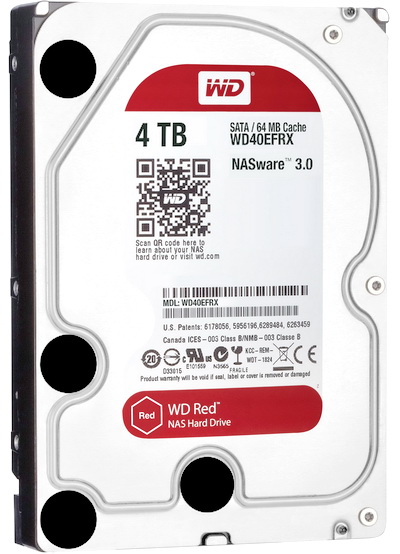INTRODUCTION

Mechanical hard disk drives have been around for decades now but it wasn't until the introduction of the first NAS (network attached storage) and digital NVR (network video recorder) models that the need for different models was even considered by manufacturers. Sure consumer and enterprise/industrial grade models have been around for as long as i can remember (in the old days we had IDE consumer models and SCSI enterprise ones – who remembers the Atlas?) but now manufacturers had to develop models not only ideal for 24/7 use, advanced error correction technologies and even improved RAID capabilities (just like enterprise models) but also with reduced power consumption and temperatures. Both Seagate and Western Digital currently have several NAS and NVR focused hard disk drive models in their product lines (WD was actually first) and since we've always had a soft spot for NAS reviews today we'll be testing the WD RED 4TB (WD40EFRX) but unlike the very first models released up until roughly 2 years ago this features the latest NASware 3.0 firmware version.
WD, a Western Digital company, is a long-time innovator and storage industry leader. As a storage technology pacesetter, the company produces reliable, high-performance hard disk drives and solid state drives. These drives are deployed by OEMs and integrators in desktop and mobile computers, enterprise computing systems, embedded systems and consumer electronics applications, as well as by the company in providing its own storage products. WD’s leading storage devices and systems, networking products, media players and software solutions empower people around the world to easily save, store, protect, share and experience their content on multiple devices. WD was established in 1970 and is headquartered in Irvine, California.
Although NAS devices/servers work just fine with whatever HDD you mount inside there are several advantages by using a NAS focused model including advanced error correction, faster RAID rebuild, reduced power consumption and temperatures. Error correction technologies can safeguard your data while faster RAID rebuild times can be the difference between just a few hours and days. Certainly power consumption may not seem much to most people since at the end of the day the difference between a normal and a NAS focused HDD is not really great but for 24/7 use electricity costs actually add up. Temperatures may also not seem as something great but the more heat building up inside a small device like a NAS the more problems you may run into in the long run. The Red drives by WD focus on those four aspects and ontop of that they also use the latest NASware 3.0 firmware which features shock protection (thanks to a multi-axis shock sensor), dynamic fly height technology (adjusts each read-write function to compensate and protect the data), vibration protection (monitors the drive to correct both linear and rotational vibration in real time)m intelligent error recovery controls and command completion. The drive itself has 4 platters that spin at 5400RPM (features Intellipower technology) and a total of 64MB cache while Western Digital covers it with a 5 year warranty and gives it a MTBF of 1 million hours.

 O-Sense
O-Sense







.png)

